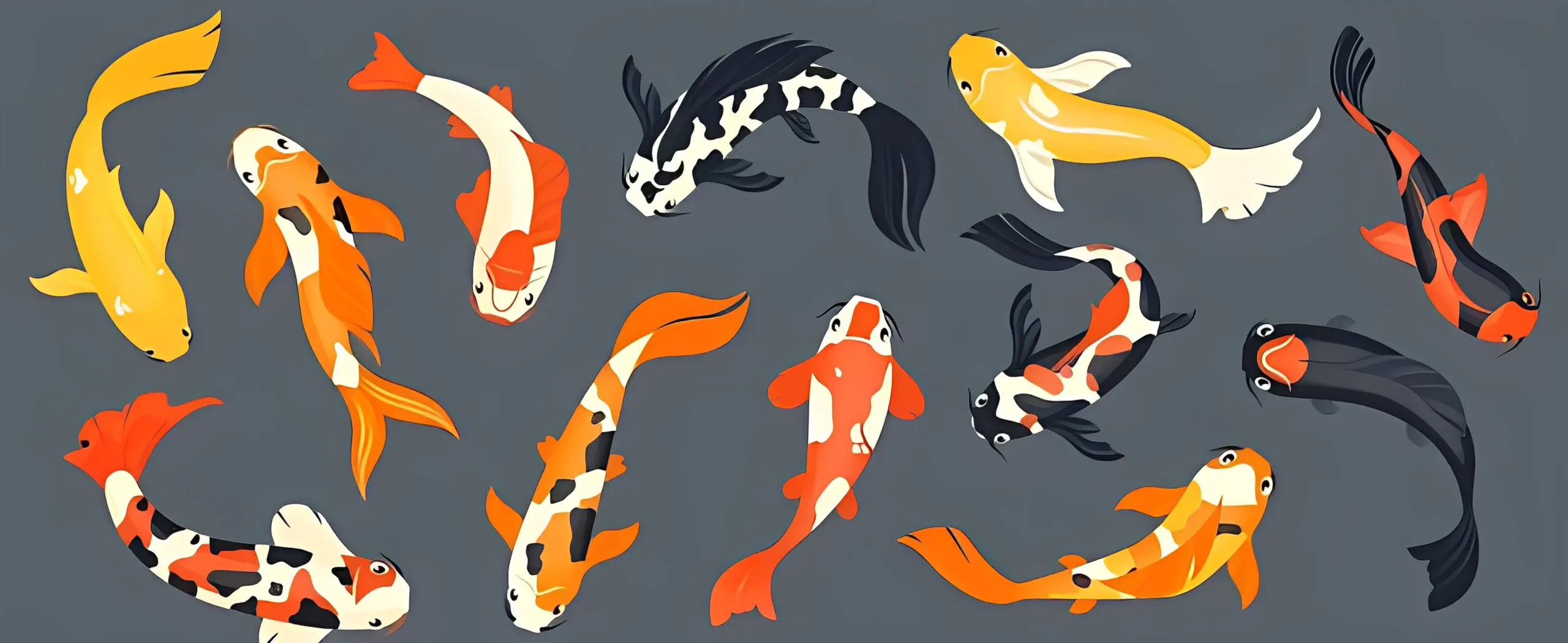Are you fascinated by the vibrant and mesmerizing colors of goldfish? These graceful underwater creatures come in a myriad of hues, patterns, and combinations, making them a sought-after addition to any aquarium. In this article, we dive into the world of goldfish colors and patterns, exploring the various types and their characteristics.
Common goldfish color variations
Goldfish are known for their stunning array of colors, each variety boasting its own unique hue. One of the most common and beloved colors found in goldfish is vibrant red. The classic Comet goldfish, with its sleek body and flowing tail, is often seen in a striking shade of fiery red. This color is a result of carotenoid pigments, which are derived from their diet and get deposited in their skin and scales.
While red is a popular color, goldfish also come in shades of orange, yellow, and even white. The Fantail goldfish, for example, is known for its lustrous, metallic orange coloration. Similarly, the elegant Sarasa Comet displays a beautiful combination of red and white patches on its body, creating a visually stunning contrast.
Goldfish enthusiasts also appreciate the rare and unique color variations that can be found in certain breeds. The Shubunkin goldfish, for instance, exhibits a calico pattern, which is a mix of orange, black, and blue patches, resembling a painter’s palette. These bright and playful colors make the Shubunkin a favorite among many aquarists.
Understanding goldfish patterns
Goldfish not only exhibit a wide range of colors but also come in various patterns that add to their charm and allure. One such pattern is the metallic scale type, where the scales have a shiny and reflective appearance. This gives the goldfish a glamorous and eye-catching look, making them stand out in any aquarium.
Another fascinating pattern found in goldfish is the calico pattern, characterized by a mix of different colors and patches on the body. The colors can range from vibrant red, orange, and black to more subtle shades like white and silver. The calico pattern creates a beautiful mosaic effect, adding a touch of elegance and sophistication to the goldfish.
Some goldfish varieties showcase transparent scales, which allow the underlying blood vessels to be visible. This unique pattern, known as the veiled or veined pattern, creates a delicate and ethereal look. The Ryukin goldfish is known for its veined scales, which give it an almost celestial appearance as if it were adorned with delicate lace.
Factors that affect goldfish colors and patterns
Several factors influence the colors and patterns exhibited by goldfish. Genetics play a significant role in determining the coloration of these aquatic beauties. Through selective breeding techniques, goldfish breeders have been able to develop specific strains that exhibit vibrant colors and unique patterns. This has led to the creation of goldfish varieties like the Black Moor, with its striking black color and telescope eyes, or the Red Cap Oranda, which features a bright red cap on its head.
Apart from genetics, environmental factors can also impact the colors and patterns of goldfish. The quality of water, temperature, and lighting conditions can all influence their coloration. For instance, goldfish kept in warmer water tend to have more intense colors, while those kept in colder water may exhibit paler hues. Similarly, exposure to natural sunlight or specific artificial lighting can enhance or alter the colors and patterns of goldfish.
Know Why Do Goldfish Change Color or Turn White?
Selecting goldfish based on colors and patterns
When choosing goldfish for your aquarium, it’s important to consider the colors and patterns that appeal to you. Some aquarists prefer a cohesive and harmonious color palette, while others enjoy a vibrant mix of different colors and patterns. Keep in mind that certain colors and patterns may develop or intensify as the goldfish matures, so it’s essential to research and understand the specific traits of the variety you’re interested in.
Observing the goldfish in person before making a purchase is highly recommended. This allows you to assess the coloration and patterns of the fish firsthand, ensuring that they meet your expectations. Additionally, consulting with knowledgeable goldfish breeders or aquarium specialists can provide valuable insights and guidance in selecting goldfish based on their colors and patterns.
Tips for enhancing goldfish colors and patterns
If you’re looking to enhance the colors and patterns of your goldfish, there are several steps you can take. Providing a well-balanced and nutritious diet is crucial, as it helps promote vibrant and healthy skin pigmentation. Foods rich in carotenoids, such as spirulina, shrimp, and krill, can intensify the red, orange, and yellow colors of goldfish.
Maintaining optimal water conditions is also essential for preserving the colors and patterns of goldfish. Regular water changes, proper filtration, and adequate oxygenation can help keep the water clean and clear, preventing any build-up of harmful substances that could dull the goldfish’s colors.
Caring for goldfish with vibrant colors and unique patterns
Goldfish with vibrant colors and unique patterns require proper care to thrive. Providing a spacious and well-maintained aquarium is crucial, as overcrowding can lead to stress and compromised health. Ensure that the water temperature and pH levels are suitable for the specific goldfish variety you have, as different strains may have different requirements.
Regular monitoring of water parameters, such as ammonia, nitrite, and nitrate levels, is important to maintain a healthy environment. Additionally, performing routine water changes and keeping the aquarium clean can help prevent the accumulation of waste and harmful substances that could affect the goldfish’s colors and patterns.
Breeding goldfish for specific colors and patterns
Goldfish breeding is a fascinating process that allows breeders to create and refine specific colors and patterns. Selective breeding techniques are employed to achieve desired traits, such as vibrant colors, unique patterns, or even specific fin shapes. This meticulous process involves carefully selecting parent fish with desirable traits and ensuring proper breeding conditions.
Breeders often keep detailed records of the lineage and characteristics of their goldfish to track and refine specific color and pattern traits. Over time, this selective breeding results in the development of new and distinct goldfish varieties that showcase stunning colors and mesmerizing patterns.
Popular goldfish varieties known for their colors and patterns
Several goldfish varieties have gained popularity for their exceptional colors and patterns. One such variety is the Oranda goldfish, which is known for its striking appearance. With its rounded body, flowing fins, and prominent head growth, the Oranda is often seen in shades of red, orange, and even calico patterns. The Red Cap Oranda, with its bright red cap on the head, is particularly sought after by goldfish enthusiasts.
The Ranchu goldfish is another beloved variety known for its unique appearance. With its short and rounded body, the Ranchu showcases a beautiful metallic sheen and comes in a range of colors, including red, white, and even black. Its distinct head growth, known as the “wen,” adds to its charm and popularity among goldfish enthusiasts.
Conclusion: Appreciating the beauty of goldfish colors and patterns
Goldfish are truly a sight to behold, with their vibrant colors and mesmerizing patterns captivating the hearts of aquarists around the world. From the classic red tones of the Comet to the intricate patterns of the calico Shubunkin, each variety showcases nature’s unmatched artistry.
Understanding the factors that influence goldfish colors and patterns, as well as selecting and caring for these aquatic beauties, allows us to appreciate their beauty to the fullest. Whether you’re an avid goldfish enthusiast or simply intrigued by the wonders of nature, take a moment to marvel at the stunning colors and patterns exhibited by these graceful underwater creatures. Their presence in any aquarium is sure to bring joy and tranquility to any observer.

